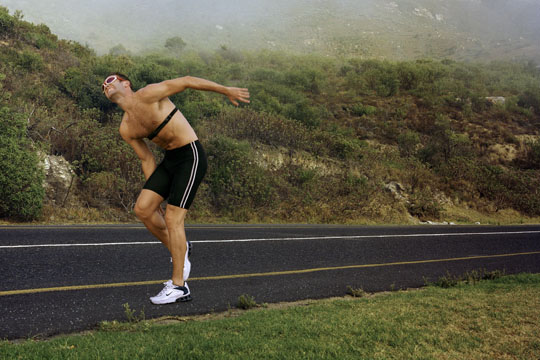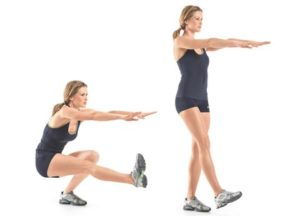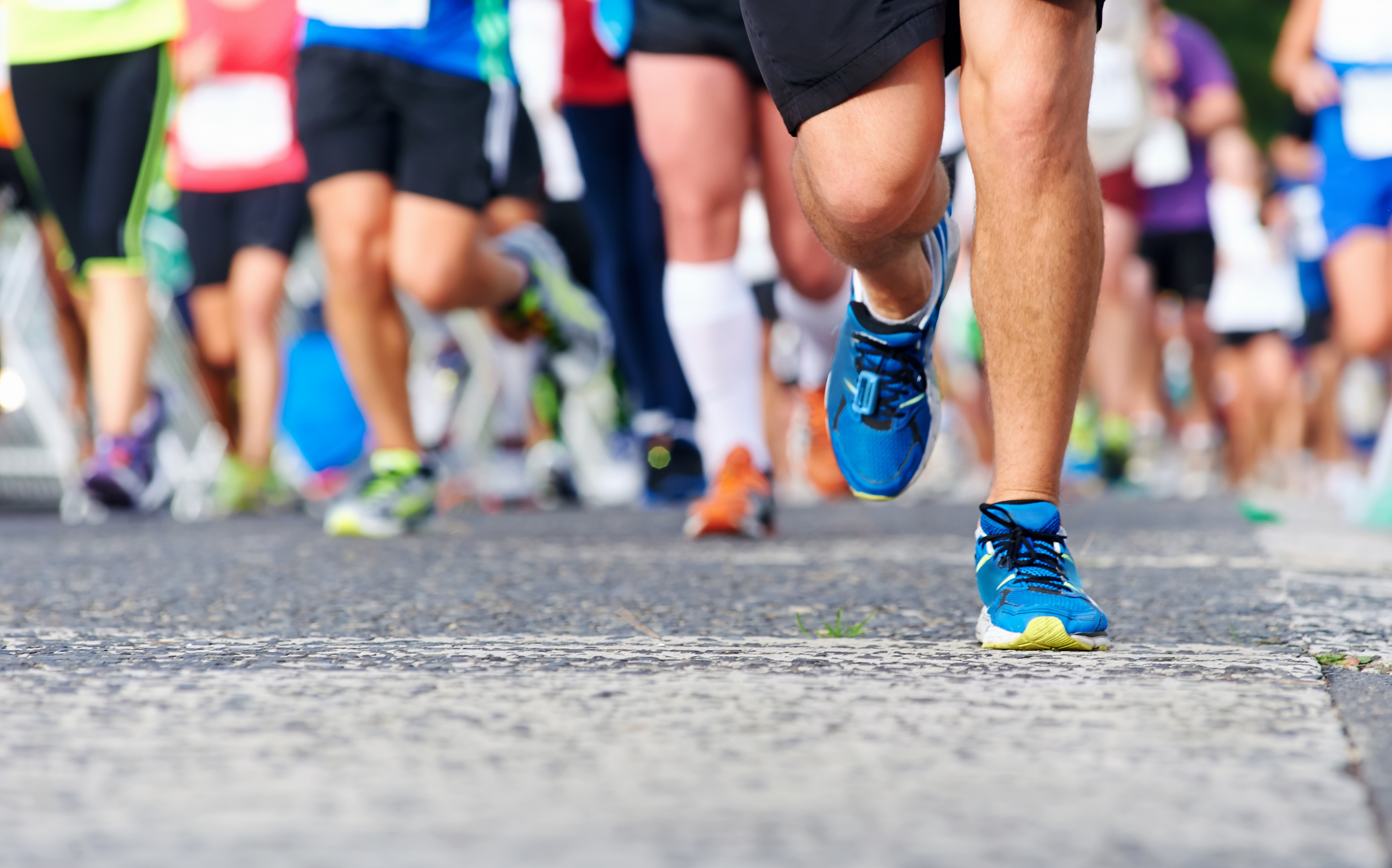One of the biggest myths that runners keep spreading, is that running is enough. If you run, you will lose weight, get in shape, and experience a whole lot of health benefits. Although runners do have good bodies, the truth is that running is only good for the cardiovascular and respiratory systems but will not do not much for your muscles.
The question is, “What is wrong with focusing on extending your runs when you are training for a marathon?”
The answer is running cannot help you gain muscle. How that translates in the way you perform is if you don’t’ have enough muscle mass, you won’t be able to endure longer runs. So, if you are planning to enter a marathon, you need to have strong muscles or your body will not be able to endure.
Contents
Don’t Rely on the Traditional Marathon Training
Incorporating other exercises aside from running will not only strengthen your muscles but will help prevent injuries. Studies show that athletes who train have lower incidents of injury than those who don’t train.

In another study, it was discovered that 48% of runners experienced at least one injury and 54% of these injuries were new, while the rest were a result of previous injuries. The causes of injury were a result of intense training or running on new surfaces.
The reason is clear- relying on traditional training methods won’t give you the strength you need for a marathon. Running a marathon is something your body is not used to and could easily cause injury. This is one of the most important reasons why you need to incorporate another exercise.
Switch Cardio for Strength Workouts on Some Training Days
As a runner, you already do a lot of cardio on your runs. In reality, you will need more than good heart health to succeed in a marathon. A marathon tests the strength of all the muscles in your body and hence, you will need to get them in shape to deal with those.
In one published study, the effect of incorporating strength workouts in distance runners was examined. The study involved 12 female distance runners who underwent a ten-week training program. One group only engaged in endurance training and the other incorporated strength training in their workout programs. At the end of the study, the group that incorporated strength training helped improve running more than as compared to endurance training alone.
Strength training can help you to attain or modify running technique such as maintaining an erect posture when you run. This is only possible if you have a strong lower back.
Best Exercises To Incorporate With Marathon Training
Since maintaining a good strength training program is critical for you to succeed in your marathon, it is vital that you start incorporating these exercises as soon as possible. While all these exercises can be accomplished no matter your goals, it is best to tailor your training to your circumstances. These are the five most effective exercises to incorporate.
#1 Focus On Stability With Body Weight Movements
The advantage of these exercises is that they help to strengthen your hips and prepare your muscles to handle more intense runs. Stability exercises will help build your balance in your pelvis which will lower your risk of injury.
The first exercise you can try is the single leg exercise such as the single leg dead-lift. To do this, you could follow below instruction:

- Hold a kettle bell in one hand allowing it to hang on your side.
- Then stand on the leg that is on the same side of the kettle bell.
- Next, bend your knee slightly while extending the opposite leg behind you for balance.
- Lower the kettle bell slowly until you find yourself in a parallel position to the ground
- Return to your standing position.
Another good stability workout is the single leg squat (also called pistol squat).

To perform this:
- Balance on one foot
- Squat bending at your knee as if you are going to sit down.
- When you are near the floor, extend your leg up to standing.
- You may also use your extended arms for balance.
#2 Gain Muscle With Weight Lifting Workouts
Incorporating weight lifting in your running routine is often feared because runners want to stay slim and not get bulky. Weight lifting helps improve your overall strength which trains your muscles to be able to handle higher amounts of stress.
The basic weight lifting workout you can try is the barbell squat.

To begin:
- Set the bar on a rack above the level of your shoulder
- Once the bar is loaded, place it slightly below your neck on your shoulders.
- Hold the bar firmly with both hands
- Position your legs apart slightly pointed.
- With your back straight slowly bend your knees sitting on your hips
- Then raise by pushing the floor until your legs are fully extended.
#3 Get Maximum Power With Explosive Movements
Having strong muscles is not enough, you also need to train your body to have the power to perform explosive movements. These workouts will give you the power you need to run past the finish line strong.
Plyometric push ups are a good example of workout routine that uses explosive movement while training the muscles. They make the muscles exert maximum force in short intervals of time to help you increase power.

Examples of plyometric push-ups are the muay-thai push-ups, single-clap push-ups, triple-clap push-ups, flying superman push-ups, and the Aztec push-ups.
#4 Spend Time For Maintenance And Recovery
With all the strength training and explosive movements, it is easy for your muscles to get over fatigued. This is why recovery is very important. Allowing your muscles to reach a point where are fatigued can influence your performance as an athlete not only physically but also mentally. The more stress you put on your muscles, the more recovery they will require.
During the recovery stage, you can still keep your body moving by using body weight movements. Sit-up workouts, Squats, lunges, pushups and the like are examples of such exercises. Just make sure you keep the repetition and the intensity moderate to avoid overtaxing your body.
#5 Remember To Vary Your Running Routine
Since your ultimate goal is running a marathon, you will off course need to spend a lot of time perfecting your running technique. Spicing up your running routine will help your muscles get used to different intensity runs which will ultimately build up to running your marathon.
Tempo runs help improve your running pace and performance and trains you to run efficiently. Ideally, you start at an easy pace and then slowly increase your pace, accelerating until you reach a peak pace which would be about 15 seconds slower than your 10k run.
Interval runs are another very effective running routine that will give allow you to get results in shorter periods of time. According to researchers who studied the different between moderate intensity runs and interval runs, it was discovered that similar energy was used. However, the subjects who were engaged in interval runs described the run as more difficult yet enjoyable.
There are many ways to do an interval. For example, you could warm up, then run at your maximum speed for 30 minutes then have a 3 minute rest time and repeat. Basically, the idea is to switch from low intensity to high intensity in intervals with minimal recovery time.
Hill runs are great in helping you build endurance and power. In addition, they can help prevent shin splints by putting pressure on your shinbones. Running up a hill also does wonders in increasing your overall muscle strength while allowing you to burn more calories.
When doing hill runs, be very conscious of your form. Use your arms to help you pull your legs uphill, always make sure your shoulders are stacked on top of your pelvis and lift your knees high up. Also, make sure you lift off your toes for an easier climb.
Conclusion
No matter how intense your running routine is, it is clearly not enough. You need to train every inch of your body if you are to cross the finish line on your planned marathon. The mentioned five exercises will target muscle groups that are not touched by running while helping you gain muscle. This will put you on the right track to overall better running performance.
Did you find this article useful? How have you trained for your marathon? What are your favorite workouts? We’d love to hear your thoughts in the comments below. Also, make sure to share this article with friends.
AUTHOR BIO:
 Amber Irwin is a running and sports writer. She loves to share her passion with fellow outdoor lovers and hopes to establish a community here. She believes that running is an amazing sport for everyone and hope to inspire others with her words.
Amber Irwin is a running and sports writer. She loves to share her passion with fellow outdoor lovers and hopes to establish a community here. She believes that running is an amazing sport for everyone and hope to inspire others with her words.






1 Comment